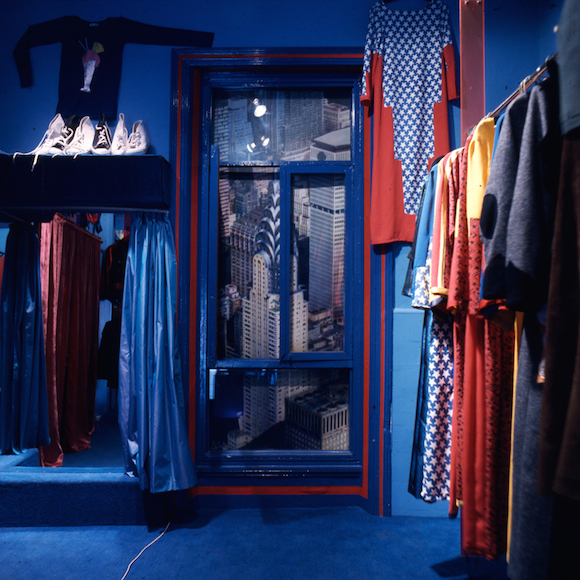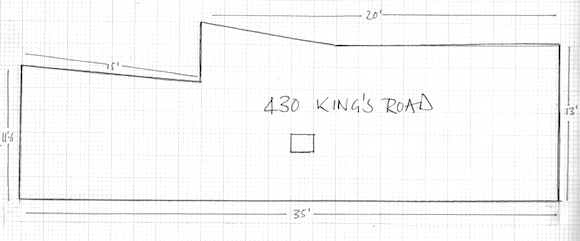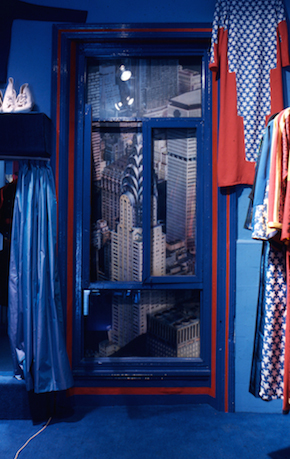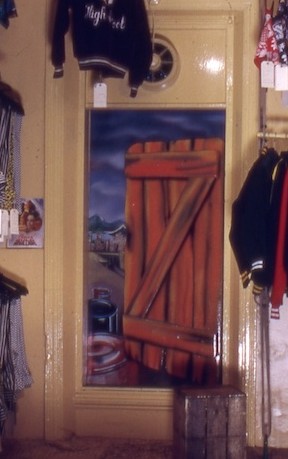430 Kings Road: In the back of Mr Freedom, Paradise Garage + Let It Rock 1969 – 1972

/Left: Andrew Greaves of Electric Colour Company in the back of Paradise Garage, May 1971. Right: Vivienne Westwood in the back of Let It Rock, January 1972. Photos: David Parkinson//
Preparation for my paper at Ben Kelly’s interior design symposium Dead Or Alive has coincided with the refurbishment of the Worlds End shop at 430 King’s Road in Chelsea.
The address is the subject of my talk; I’ll be detailing the history of 430 and how and why it was an important social and cultural locus over a number of decades.

//Back wall of 430 King’s Road on the opening of Mr Freedom, September 1969. Interior: Electric Colour Company. Photo: David Parkinson//

//Back wall of 430 Kings Road when Paradise Garage was opened there in May 1971. Interior: Electric Colour Company. Photo: David Parkinson//

//Back wall of 430 King’s Road after refurbishment as Let It Rock, January 1972. Vivienne Westwood in foreground. Interior: Malcolm McLaren. Photo: David Parkinson//
There were eight manifestations of the retail fashion business at the address after Bill Fuller and Carol Derry opened The 430 Boutique there in the early 60s, and the photography of the late David Parkinson over a period of 30 months shows the mutability of this relatively small retail space (which has a floor area of 450sq ft).

//Floor plan of the site when it went through nine interior changes between 1964 and 1981. The box marks the supporting pillar//
For example the floorage of the back part of the shop measures around 180 sq ft and the back wall, which included a rear access and vent, was just 13ft wide.
As these photographs demonstrate, it was repeatedly resolved with invention: for instance, design collective Electric Colour Company used the door for trompe de l’oeil for Mr Freedom in 1969 and Paradise Garage in 1971 – first an aerial view of the Chrysler Building and then the gate of a shack opening onto a rural backyard.
//The rear entry door 1969 and 1971 shows Electric Colour Company’s shift from the primary Pop palette and hard-edged imagery of Mr Freedom into the bucolic shades and references of the American West for Paradise Garage//
When Malcolm McLaren took over in late 1971 he instituted a refurbishment drawing on the spatial awareness developed over years at various art schools, just as the members of Electric Colour Co had used their own fine art educations as the basis for design practice.
At the back of 430 McLaren realised his ambition to create a suburban 50s sitting room suitable for a lounging Teddy Boy; on a linoleum covered platform along the base of the back wall he placed a kitsch glass cabinet, teen and showbiz magazines, a Dansette, plastic flowers and pink nylon decorative ruffles accompanied on the wall by framed photographs of James Dean and other 50s icons.
The cabinet obscured the lower-half of the doorway; the top surround provided a frame for the pair of theatrical flute-top boots he bought for Westwood from West End shoe-makers Frederick Freed, a photo of Screaming Lord Sutch set against a decorated plate, green nylon curtain material and a British seaside view.
These and the other design solutions realised at 430 King’s Road will be investigated in my talk at Interior Design: Dead Or Alive, which is at the ICA on Saturday March 14. Read more about the event here and book tickets here.
My feature on Electric Colour Company is in the next issue of GQ Style, out on March 11.
Thanks to Andrew Greaves for the Paradise Garage and Mr Freedom photography.



